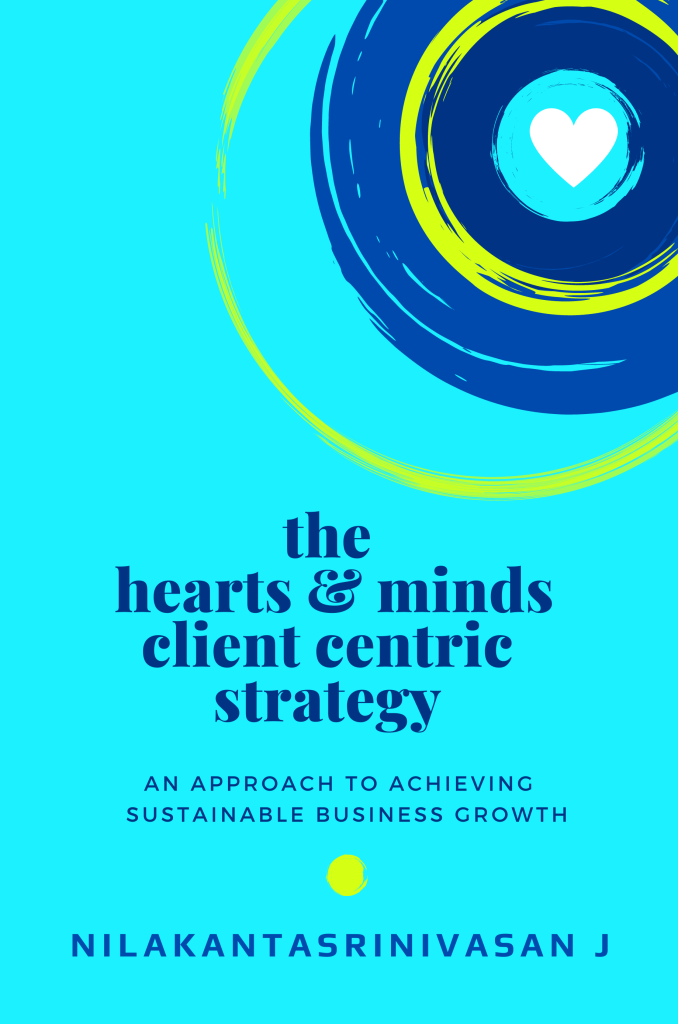Scaling Client-Centricity in B2B is difficult. Here are 6 Challenges and Solutions to address them with live business examples.

In complex B2B environments, growing with your clients means more than adding headcount or markets, it demands rigorous processes, unified branding, and unwavering focus on outcomes. Below, each major roadblock to scaling client-centricity is unpacked with hard data, lived examples, and clear prescriptions for action.
1. Maintaining Service Quality at Scale
As client bases expand, even seasoned teams struggle to deliver the same level of responsiveness and expertise. Studies show 80 percent of B2B buyers rate consistency across touchpoints as critical to loyalty, and nearly 70 percent have walked away from a supplier after a single poor experience.
In practice, AutoDS, a global e-commerce automation platform, saw its support tickets quadruple in six months. By codifying onboarding steps into templated playbooks and deploying a chatbot that resolves 60 percent of routine inquiries, they reduced average resolution time by 40 percent and held CSAT scores at 4.7/5.
Solutions:
- Build detailed process playbooks for onboarding, support, and escalation paths.
- Automate repetitive requests through self-service portals and AI chatbots.
- Implement a customer-health platform (e.g., Gainsight) to track usage, renewals, and risk signals in real time.
- Schedule quarterly “quality retrospectives” to surface gaps before they escalate.
2. Preserving Brand Consistency
Rapid growth across regions and channels often dilutes core messaging, eroding brand trust. According to Lucidpress, organizations with strong brand consistency see revenue increase by up to 33 percent. Without tight governance, local teams drift into bespoke visuals and tone, confusing prospects.
Erase.com, a reputation-management startup, faced this at 50 percent annual growth. They countered by rolling out a centralized brand portal with mandatory style guides, preapproved template libraries, and a Slack-integrated approval bot. The result: a 15 percent uptick in brand-trust survey scores and unified collateral for all global markets.
Solutions:
- Establish a single source of truth for logos, color palettes, typography, and voice.
- Enforce content approvals via workflow tools (e.g., Frontify, Bynder).
- Monitor social and review sites daily with reputation-management software.
- Train every new hire on brand standards during onboarding and annually thereafter.
3. Managing Extended Sales Cycles
Large-ticket B2B deals often stretch six to nine months and involve five to eight stakeholders. This complexity ties up resources, stalls revenue recognition, and jeopardizes momentum. Gartner data indicates only 6 percent of enterprise deals close in under three months, underscoring the drag.
Toyota’s Woven Capital group solves this by investing in promising startups as an anchor client. By co-developing and co-piloting solutions, Toyota not only accelerates proof-of-concept phases by 20 percent but also cements deep strategic relationships before formal contracts. This solution may not be applicable in all scenarios of long sales cycles.
Solutions:
- Leverage corporate venture capital or strategic partnerships to become an early stakeholder in client initiatives.
- Create dedicated “deal acceleration” teams with legal, finance, and product experts on standby.
- Break the procurement cycle into modular pilots that deliver value in 30–60 days.
- Use CPQ (configure-price-quote) tools to streamline approvals and automate contract generation.
4. Communicating Differentiated Value
When firms talk about features rather than outcomes, they drown in a sea of sameness. Demand Gen Report finds 80 percent of B2B buyers say solution-oriented messaging is a key driver of conversion. Yet many organizations default to capability lists.
FMG Leading shifted course by rebuilding its website and sales deck around three core client problems—inefficient onboarding, scattered content, weak adoption metrics—and paired each with a quantified ROI story. Within one quarter, they saw a 30 percent lift in marketing-qualified leads and a 22 percent increase in win rate.
Solutions:
- Center all external assets on client pain points and business impact, not service features.
- Develop a library of succinct case studies highlighting before-and-after metrics.
- Train sales teams in consultative questioning to uncover hidden needs.
- Adopt storytelling frameworks that tie features directly to KPIs (time saved, revenue uplift, risk mitigated).
Free Download
Download your copy of a research report on B2B customer experience practices in India.
Our research is to understand the best practices amongst the enterprises across various sectors in Indian region when it comes to Customer Experience Transformation. Customer Experience as a concept is generally not given the required attention is B2B sector. With increase in the competition in the market, customer experience is one of the major thing which defines the performance of the organization.

5. Delivering Consistent Customer Experiences
Forrester reports that 51 percent of B2B buyers would pay a premium for a superior customer experience. Yet scaling that “delight factor” is notoriously hard when manual handoffs multiply.
OnRamp—a managed-services provider—integrated Gainsight to automate check-in emails, schedule quarterly business reviews, and trigger proactive escalation when usage dipped. They also instituted “client delight” moments: anniversary gifts tied to client milestones. Net Promoter Score climbed from +28 to +47 in nine months.
Solutions:
- Embed voice-of-customer surveys at every lifecycle milestone.
- Automate proactive health-check communications and in-app guidance.
- Curate surprise “delight” touches (e.g., milestone gifts, free advisory sessions).
- Feed feedback directly into product and support roadmaps for rapid iteration.
6. Balancing Innovation with Efficiency
Investing in new offerings without disrupting core operations is a tightrope walk. McKinsey research shows top innovators dedicate 15–20 percent of their R&D budget to exploratory pilots, then scale only the 10 percent that prove out commercially.
IBM’s “Garage” model exemplifies this: autonomous, cross-discipline pods experiment with blockchain, AI, and IoT in six-week sprints. When a prototype gains traction, they plug it into established delivery channels. This structure has yielded 12 new service lines in two years, while keeping legacy offerings on autopilot.
Solutions:
- Spin up small, empowered innovation pods with clear charters, budgets, and success metrics.
- Allocate a fixed percentage of overall resources to experimental projects.
- Use hackathons and internal incubators to surface employee-led ideas.
- Institute a stage-gate review process: innovations that hit agreed milestones get seamless integration into core operations.
By rigorously addressing each challenge with data-backed solutions and proven examples, B2B organizations can transform the complexity of scale into engines of client loyalty and sustainable growth
What are your challenges? Do you need professional help in this area? Contact Us
#nilakantasrinivasan-j #canopus-business-management-group #B2B-client-centric-growth #client-centric-culture #Client-centric-strategies
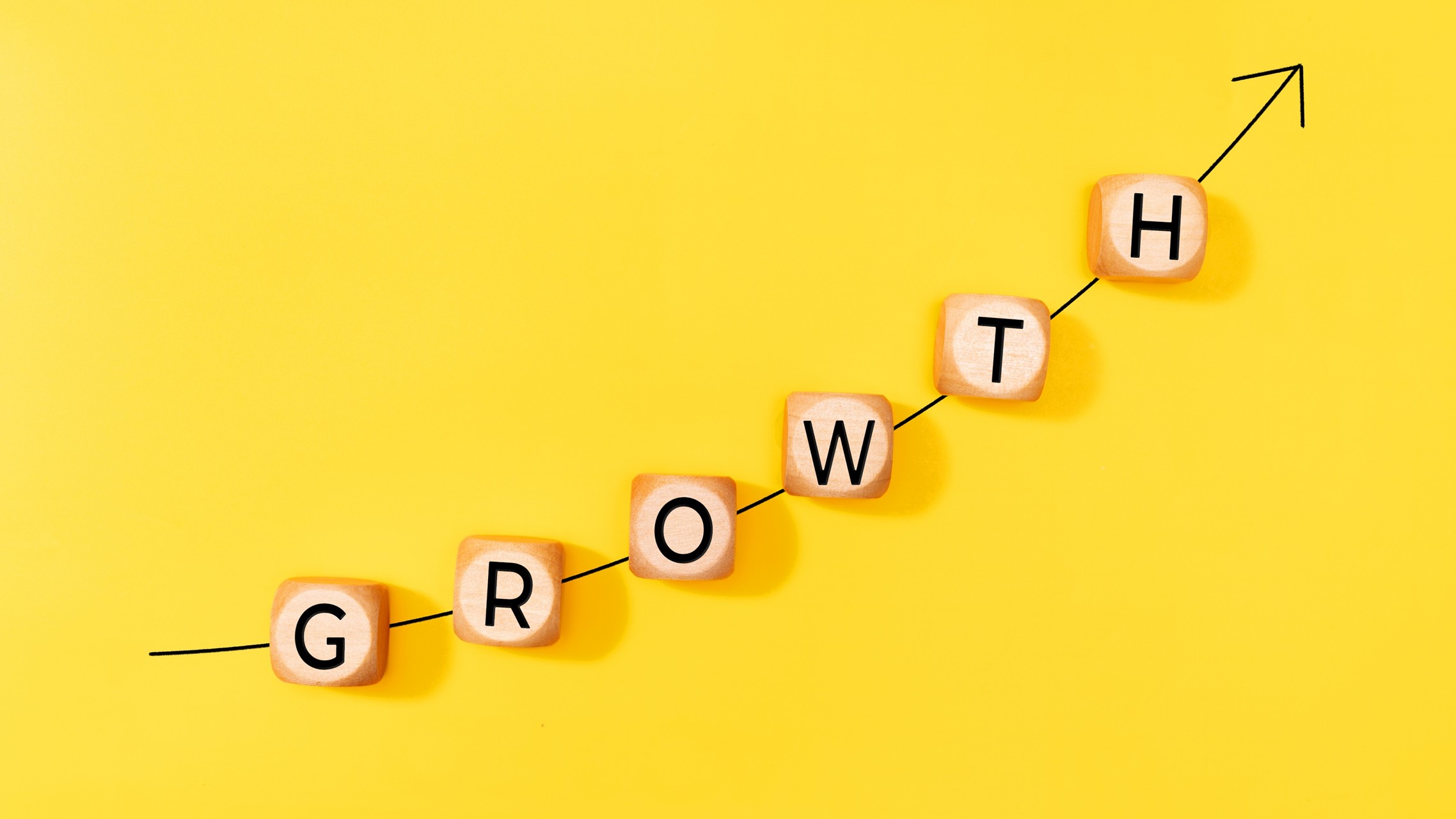
How Second-Order Thinking Drives Strategic B2B Growth and Competitive Advantage
What feels like a smart investment today may become a burden tomorrow. In general, decisions that look like victories in the moment can quietly turn into setbacks down the line.
Second-order thinking is the practice of looking beyond immediate outcomes to anticipate indirect, delayed, and compounding effects of decisions.
What is Second-Order Thinking?
Second-order thinking is a mental model, a practice of looking beyond immediate consequences to anticipate the indirect, delayed, and compounding effects of decisions. Instead of asking “What happens now?”, it asks “What happens next—and then what?” This deeper layer of analysis helps avoid unintended consequences and uncovers hidden opportunities.
This mental model can be applied in our everyday life.
Here is a everyday example.
Imagine you decide to eat a unhealthy snack, when you’re hungry:
- First-order: You satisfy your hunger instantly.
- Second-order: You gain a few grams of weight, feel a bit sleepy, and postpone an important task.
- Third-order: After weeks of daily that snack, your clothes no longer fit and your project deadlines slip.
- Fourth-order: Over years, you face health issues, incur medical costs, and compromise long-term goals.
In today’s hyper-connected, fast-moving marketplace, second-order thinking gives leaders the X-ray vision to spot hidden risks and opportunities beyond the obvious.
For example, the Transformative Innovation Policy Consortium (TIPC) ran a dedicated Second-Order Learning (SOL) research project during the COVID-19 pandemic. Between May and December 2020, TIPC—led by Alejandra Boni of INGENIO (CSIC-UPV)—brought together diverse researchers and practitioners to reflexively explore how the crisis acted as a landscape shock, driving double-loop learning that challenged core assumptions and informed sustainability transitions.
In business, when you’re tempted by a quick ROI from a new technology rollout, a market expansion, or a cost-cutting reorg, it’s easy to cheer the immediate gains and ignore the domino effects—rising vendor lock-in, shifting customer expectations, or internal culture stress. By mapping out those ripples two, three, or four steps ahead, you safeguard against unintended blowbacks, strengthen stakeholder trust, and craft strategies that hold up under tomorrow’s pressures. In a world where yesterday’s breakthrough can become today’s liability, that long-game perspective isn’t optional—it’s your competitive lifeline.
Netflix Example
In 2011, Netflix announced a plan to split its DVD and streaming services under a new brand (“Qwikster”). First-order thinking focused on operational clarity. Second-order thinkers anticipated brand confusion, subscriber backlash, and accelerated churn. Recognizing these ripple effects, Netflix rapidly reversed the decision—preserving customer trust and averting a deeper crisis.
When to use Second-Order Thinking in Business?
There are innumerable scenarios for applying the second-order thinking in Business. To get started, here are a few important business decisions where it comes handy.
- Technology rollouts (to identify data, security, and change-management implications)
- Major pricing changes (to foresee churn, brand impact, upsell potential)
- Product launches (to anticipate support, training, and ecosystem effects)
- M&A and partnerships (to map cultural integration, regulatory scrutiny, and talent shifts)
History of Second-Order Thinking
The concept of looking multiple steps ahead was formalized in investing circles by Howard Marks in his book The Most Important Thing (2011), where he calls it second-level thinking. Shane Parrish later popularized it under the name “second-order thinking,” crediting thinkers like Ray Dalio and Charlie Munger for championing the mindset of “And then what?”.
Many iconic leaders like Jeff Bezos, Warren Buffett, Charlie Munger, Bill Gates, Elon Musk and Steve Jobs embed this mental model into their decision processes.
Business Scenario Application
Decision : You roll out a 20% discount on your core subscription plan to accelerate sign-ups.
First-Order Effects
- Surge in new customer acquisitions
- Quick uplift in MRR (monthly recurring revenue)
Second-Order Effects
- Margin compression as discounted seats lower average revenue per user (ARPU)
- Existing customers feel slighted, increasing support tickets and complaints
- New customers sign up for the discount only, then churn when price resets
- Premium tiers lose appeal if the lower tier offers too much value, stunting upsell growth
Mitigation (via Second-Order Thinking)
- Time-box the discount and communicate clear end dates to preserve ARPU
- Bundle value-add services (onboarding, training) to offset margin impact
- Introduce “discounted” and “core” cohorts in billing systems to monitor churn difference
Use this simple structure for any of your important decision (given with above example):

Is there a Third-Order Thinking?
Third-order thinking moves beyond first-order (immediate outcomes) and second-order (downstream ripples) to examine how systems themselves evolve. It asks: when our actions reshape the broader landscape, how do new rules, norms, and networks emerge as a result?
Let’s take the example of automating a production process.
- First-Order: Production speed doubles.
- Second-Order: Headcount falls, upskilling on automation becomes a priority.
- Third-Order: Vocational schools revise curricula, trade unions lobby for new labor laws, and aftermarket service providers reinvent subscription models to support advanced robotics.
#nilakantasrinivasan-j #canopus-business-management-group #B2B-client-centric-growth #client-centric-culture #Netflix #TIPC #SOL #B2B-Growth
Learn to create SOAR Matrix with live business examples
In today’s high-stakes B2B landscape, predicting change isn’t enough — leading it is the mandate. Yet too often, most organizations approach strategic planning like a checklist driven activity.
Further, most strategic planning processes lay too much emphasis on aspects such as threats, weaknesses and risks. While it is important to evaluate the deficiencies and challenges, overly emphasizing on these leads to the creation of defensive strategies.

That’s where the SOAR Matrix flips the narrative.
SOAR—short for Strengths, Opportunities, Aspirations, and Results—is a strategic planning framework built for businesses that want to scale with intention and impact. Unlike its better-known cousin SWOT, SOAR doesn’t dwell on what’s broken—it amplifies what works and focuses on what’s possible.
It’s not just another planning tool; it’s a mindset shift for teams obsessed with client success, long-term value creation, and cross-functional alignment.
What is the SOAR Framework?
- Strengths: What the organization does well—core competencies, assets, and achievements
- Opportunities: External possibilities for growth, innovation, or market expansion
- Aspirations: Vision for the future—what the organization wants to become
- Results: Tangible outcomes that measure success and progress toward aspirations
Which organizations use SOAR Matrix?
There are many organizations that use SOAR matrix in their strategic decision making process. For example, Visa, John Deere, British Aerospace (BAE systems), US Army and many such large enterprises regularly use SOAR analysis. Many large consulting firms like McKinsey, Deloitte, PWC, Accenture, KPMG, etc, also this framework for their engagements.
Why leaders should use SOAR more regularly?
SOAR is useful because it doesn’t just analyze—it inspires. It’s built for leaders and teams who want more than situational diagnosis. By focusing on strengths and possibilities, SOAR aligns stakeholders, drives engagement, and fosters a growth mindset across organizations.
SOAR need not be used only a year during strategic planning. It should be part a leader’s tool-kit and should be during every day decision making. Here’s why it is a powerful tool for leaders:
- Encourages forward-thinking and innovation rather than deficiency mindset
- Builds shared vision and emotional commitment of the team
- Facilitates goal-setting rooted in core capabilities
- Strengthens organizational culture and collaboration towards a winning spirit
- Simple storytelling framework for leaders to influence stakeholders
When should B2B firms use SOAR?
SOAR is especially valuable in the following growth-critical scenarios:
- Cross-functional alignment for long-term goal
- Launching new product lines based on client feedback
- Entering new geographies or verticals with client co-creation
- Aligning cross-departmental teams with strategic account goals
- Conducting quarterly business reviews or renewal planning
- Repositioning brand for premium, value-based growth
- Designing CX programs tied to sales KPI
- Organizational transformation or culture change
- Leadership retreats and strategic offsites
How to Conduct a Client-Centric SOAR Analysis?
Conducting a SOAR analysis isn’t really difficult. All you need is good facilitation skills.
- Gather key stakeholders from diverse functions—strategy, marketing, operations, leadership, etc.
- If needed, you can involve key client decision makers too
- Host a facilitated workshop
- Ask 3 questions:
- What do we do best?
- What future excites us?
- What success looks like?
- Draft insights for each quadrant of the SOAR Matrix
As a part of our strategic engagements with our clients, we facilitate and help our clients develop SOAR matrix.
TESLA and NVIDIA Examples
Here are a few SOAR matrix examples of Tesla and NVIDIA that I have created for you to understand the concept better.
SOAR Matrix Example 1 : Tesla’s Entry into India
Here’s how Tesla’s move into India can be framed with a growth lens.
Strengths
- Globally recognized brand with premium EV tech
- Experience in setting up Gigafactories
- Advanced autonomous systems and battery innovation
- Charismatic leadership with global influence
Opportunities
- India’s EV market projected to reach ₹35 lakh crore by 2035
- Government incentives like FAME-II and import duty concessions
- Rising urbanization and affluent middle class
- Potential for Indian Gigafactory as Southeast Asia export hub
Aspirations
- Become the leading premium EV brand in India
- Build a Gigafactory with 30% local value addition
- Launch an affordable EV tailored for Indian consumers
- Revolutionize India’s EV infrastructure and perception
Results
- Launch India-specific EV model by 2026
- Onboard 8,000 EVs annually under new import quota
- Achieve ₹7,500 crore turnover within five years
- Maintain NPS score above 70% across service touchpoints
SOAR Matrix Example 2 : NVIDIA’s AI Chip Strategy
NVIDIA’s dominance is built on a powerful combination of hardware innovation, software integration, and ecosystem control. However, rising competition from AMD, Intel, and custom silicon players (like Google’s TPU) is prompting NVIDIA to accelerate its roadmap and deepen client entrenchment.
Strengths
- Market leadership with 70–95% share in AI accelerators
- Flagship chips (H100, A100) widely adopted by tech giants like Google, Microsoft, and Amazon
- Proprietary CUDA software ecosystem creates developer lock-in
- High gross margins (~78%) and strong brand equity
Opportunities
- Surging demand for generative AI and LLM training
- Expansion into inference chips and edge AI devices
- Strategic partnerships with cloud providers and enterprise AI platforms
- Growth in simulation, robotics, and Omniverse applications
Aspirations
- Sustain innovation leadership by releasing new architectures annually
- Become the backbone of global AI infrastructure across industries
- Lead ethical AI development and energy-efficient chip design
- Expand AI Enterprise software adoption across Fortune 500 clients
Results
- Reduce energy consumption per training cycle by 30% over 3 years
- Launch next-gen chip architecture (post-H100) by Q2 2026
- Achieve 85%+ market share in inference chips by 2027
- Grow AI Enterprise revenue by 40% YoY
Do you need professional help in this area? Contact us
#nilakantasrinivasan-j #canopus-business-management-group #B2B-client-centric-growth #client-centric-culture #Tesla #NVIDIA #SOAR-Matrix #Intel #Google
In today’s hyper-competitive B2B landscape, client-centricity isn’t just a buzzword—it’s a growth engine. But embedding it into the fabric of your organization takes more than good intentions. It requires bold strategies, real-world experimentation, and a willingness to embrace both the upsides and the trade-offs. Here are five distinctive approaches that leading companies use to put clients at the center which foster client-centric culture —along with the lessons they’ve learned along the way.
1. Co-Create the Client Journey—Don’t Just Map It
Forget static journey maps built in boardrooms. The real magic happens when clients help design the experience themselves. DHL’s Innovation Centers are a masterclass in this approach. By inviting clients into co-creation workshops, DHL has developed cutting-edge logistics solutions—from parcelcopter drones to AR-powered warehouses. These sessions aren’t just about feedback—they’re about partnership, trust, and shared innovation.
Co-creation builds loyalty and unlocks solutions you’d never find alone. Clients feel heard, valued, and invested. But it’s not without its challenges. Co-creation demands time, facilitation skill, and a tolerance for ambiguity. Not every client is ready—or equipped—to ideate at this level, and not every idea will be viable. Still, when done right, the payoff is transformative.
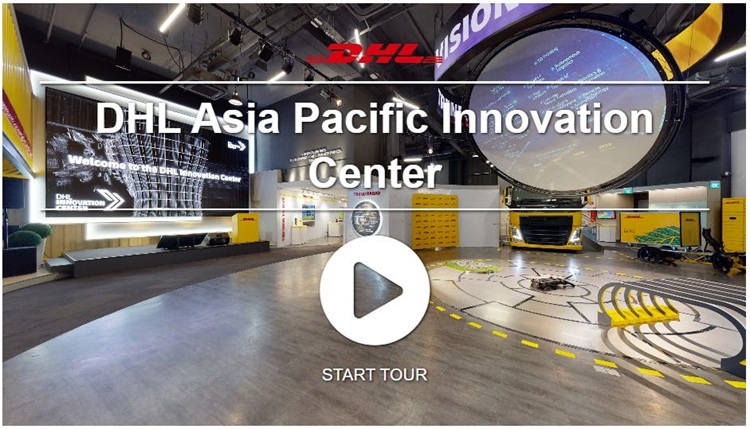
2. Train Every Team in Client Empathy
Client-centricity isn’t the job of sales alone. When finance, ops, and engineering understand client pain points, the entire organization becomes more responsive. Salesforce’s “Customer360” enablement program immerses cross-functional teams in real client stories. Through empathy labs and role-play exercises, even backend teams learn to “walk in the client’s shoes.” The result? Products and processes that reflect real-world needs—not internal assumptions.
The benefit is clear: empathy drives relevance. Teams become more agile, more aligned, and more attuned to what clients actually care about. But the downside is that empathy training can feel abstract or performative if not tied to real decisions. Without leadership reinforcement and follow-through, it risks becoming a one-off workshop rather than a cultural shift. The key is to embed empathy into daily rituals—not just annual events.
3. Measure What Matters to Clients
Vanity metrics like clicks and impressions don’t drive growth. Client-centric companies track what truly matters—like how fast clients see value or how well their goals are met. HubSpot, for example, ditched superficial KPIs in favor of metrics like “Time to First Value” and “Customer Success Score.” These helped pinpoint onboarding friction and improve retention—leading to stronger client relationships and higher lifetime value.
With right metrics, you get clarity on what drives real impact. These metrics align internal teams around client outcomes, not internal outputs. But the challenge lies in data complexity and cultural inertia. Shifting from traditional KPIs to client-centric ones requires retooling dashboards, retraining teams, and sometimes confronting uncomfortable truths. It’s worth it—but it’s not plug-and-play.
4. Embed Living Client Personas in Every Decision
Static personas belong in dusty decks. The best companies use dynamic, data-driven personas that evolve with client behavior—and influence every strategic move. IBM’s Automatic Persona Generation (APG) system creates real-time personas based on client data. These aren’t just marketing tools—they’re embedded into product development, pricing, and campaign design. It’s empathy at scale, powered by analytics.
Living personas help teams anticipate needs, personalize experiences, and make faster, smarter decisions. But there’s a trade-off: data dependency. If your inputs are flawed or biased, your personas will be too. And over-reliance on algorithms can dilute the human nuance that clients value. The best approach blends data with dialogue—quantitative insight with qualitative empathy.
5. Turn Clients into Innovation Partners
The most client-centric companies don’t just serve clients—they innovate with them. Amazon’s Lab126 invites select clients and partners to co-develop products like Kindle and Echo. Early feedback shapes design and functionality, making clients feel like collaborators—not just consumers. This model deepens trust and accelerates market fit.
With this strategy, you reduce guesswork and build solutions clients actually want. Innovation becomes faster, more targeted, and more inclusive. But the risk is scope creep and misalignment. Not every client idea fits your strategy, and not every partnership scales. Managing expectations—and protecting core vision—is essential. Still, when clients become co-innovators, the relationship transcends transaction.
Client-centricity isn’t a department—it’s a mindset!
These five strategies show how leading B2B firms embed it across every touchpoint, metric, and decision. Each approach comes with its own rewards and realities. But together, they form a blueprint for growth that’s grounded in empathy, powered by data, and shaped by collaboration.
Whether you’re in Manufacturing & Industrial, IT, SaaS, Tech, ITES, logistics, or consulting, the path to relevance starts with one question:
“What would our clients build—if they were in our shoes?”
Do you need professional help in this area? Contact us
#nilakantasrinivasan-j #canopus-business-management-group #B2B-client-centric-growth #client-centric-culture #DHL
Did you know using emojis improves business results!
We celebrate World Emoji Day today – July 17.
The first emoji was created in 1999 by Shigetaka Kurita, a Japanese designer working for the mobile communications company NTT DoCoMo. He created emojis to make digital communication more expressive and intuitive. He designed a set of 176 pixelated icons—each just 12×12 pixels. Since then, Emojis have now evolved.

Shigetaka Kurita (Source:CNN)
Have you ever wondered the role of Emoji in humanizing business communications in this digital age?
In a landscape dominated by metrics, data dashboards, and ROI spreadsheets, the humble emoji now plays a prominent role in the world of B2B messaging. What began as a millennial shorthand has quietly evolved into a strategic tool for client-centric growth professionals, seeking to infuse humanity, clarity, and nuance into their communications.
The Shift: From Formal to Feelings
B2B messaging has long been formal, brimming with jargons, and dense proposal decks. But today’s millennial client is increasingly digital, discerning, and emotionally attuned. As a result, Emojis are now a shorthand for tone, intention, and empathy. A simple or can soften the tone, signal positivity, or break the monotony of corporate dialogue.
This shift isn’t about being casual or cool, it’s about being emotionally intelligent.
Emojis also save time!

The Emoji Business Impact
Do Emoji’s really make any difference when it comes to business results?
- Emojis function like punctuation with personality. They clarify sentiment, flag urgency, reducing ambiguity in communication.
- Studies show that emails and social posts with relevant emojis often outperform their plain-text counterparts in open rates and click-throughs rates. For example,
- Email open rates increase by up to 29% when emojis are used in subject lines.
- Social media posts with emojis see 25% to 60% more engagement on Twitter, Instagram and Facebook
- Push notifications with emojis are opened 85% more often than those without

Tips for Usage
- Use sparingly for impact — avoid overloading messages.
- Match tone to context: What feels engaging in a Slack ping may feel off in a proposal.
- Emojis can humanize insights: try summarizing performance with 3 emojis.
- Keep cultural sensitivity in mind — meanings vary globally.
- A/B Test Subject lines with emojis to evaluate impact.
- Create Brand Emoji Guidelines to ensure consistency across departments and regions.

Using Emojis across Platforms
Emails (Outlook, Gmail, etc.)
Windows Emoji Picker
- Shortcut: Press
Windows + .(period) orWindows + ;(semicolon) - Works in Outlook, Gmail (browser), and most text fields
- Lets you search and insert emojis instantly
Outlook Add-ins
- Go to Home > Get Add-ins
- Search for “Emoji” and install add-ins like Emoji Keyboard or EmojiOne
- Adds a toolbar for quick emoji access 43dcd9a7-70db-4a1f-b0ae-981daa16205 Click Here
Excel
Keyboard Shortcut
- Use
Windows + .to open emoji picker directly in a cell 43dcd9a7-70db-4a1f-b0ae-981daa162054
Insert as Image
- Use
Insert > Picturesto add emoji images - Or use the
IMAGE()function with emoji URLs:
=IMAGE(“https://emoji.beeimg.com//64/twitter”)
PowerPoint
Insert Tab
- Go to
Insert > Emoji(or useWindows + .) - Emojis appear in full color and scale well for slides43dcd9a7-70db-4a1f-b0ae-981daa162054
Symbol Dialog
Insert > Symbol > More Symbols- Choose font: Segoe UI Emoji
- Browse and insert emojis manually43dcd9a7-70db-4a1f-b0ae-981daa162054

Cool Emoji Ideas to implement
Emoji-as-KPI Experiment
- Sum up last quarter’s performance using just 3 emojis
- Use this to open dialogue around storytelling with dashboards. Invite your team to share their emoji KPIs!

Build Your B2B Mood Board
- Use emoji palettes to enrich communication internally and externally.
- Conduct Emoji usage training programs
- Conduct surveys with emojis instead of rating scales
- Use emojis to give feedback after reviews
- Capture employee sentiments with emojis
- Have employees identify themselves with a emoji persona

As B2B grows more human-centric, the rise of emojis signals an evolution — not a dilution — of professional communication. These tiny symbols remind us that behind every metric is a person. And in a noisy world, sometimes all it takes is a to spark a meaningful connection.
#nilakantasrinivasan-j #canopus-business-management-group #B2B-client-centric-growth #Emoji-Day #Shigetaka-Kurita #NTT-DoCoMo
Who should be the first salesperson of your company and why?
I want to start by describing the profile of the CEO of a B2B company. He’s a technical genius and holds a couple of patents. He possesses deep-tech expertise. His growth philosophy is based on technical excellence and operational efficiency. Unfortunately, ever since he took over, the company hasn’t seen a big break. They have been lurking below their competitors in spite of superior technology. He grills his BD team day in and day out.
But the real problem is something else. It’s his mindset. He doesn’t believe that he is the “First Salesperson of his Company”. In fact, he doesn’t believe he is accountable for sales. He hardly engages with clients or prospects. Instead, he prefers to delegate client interactions to his BD team. Of course, he reviews them a lot, but he never picks up the phone and talks to a client. Neither does he voluntarily schedule visits to clients. His philosophy is that if there is a problem with clients, bring it to me. Yes, he digs deep and spends hours on technical reviews when a client complains. In fact, he tells his clients, “I’m available 24×7. Call me any time!” Clients do call him to escalate, and they fire him, and he’s always on the receiving end. Going by the Pavlovian principle of classic conditioning, every time the client calls, he’s stressed and passes it all down the line.
We consider the head of any country to be the first among equals, the first citizen. The CEO of any organization is the First Salesperson of that Company. This is even more pertinent for B2B, as sales and marketing are largely a matter of human-to-human connection.
First Salesperson of that Company – Exemplars
On the contrary, let’s consider the leadership style of Marc Benioff, co-founder of Salesforce. He is known for his hands-on approach to sales and marketing and for actively engaging with customers. In one instance, when a major potential client expressed doubts about the security and reliability of Salesforce’s cloud platform, Benioff didn’t just rely on his sales team to address the concerns. Instead, he personally met with the client’s executives, listened to their concerns, and provided detailed explanations about the robustness of Salesforce’s infrastructure and the benefits of moving to a cloud-based CRM system.
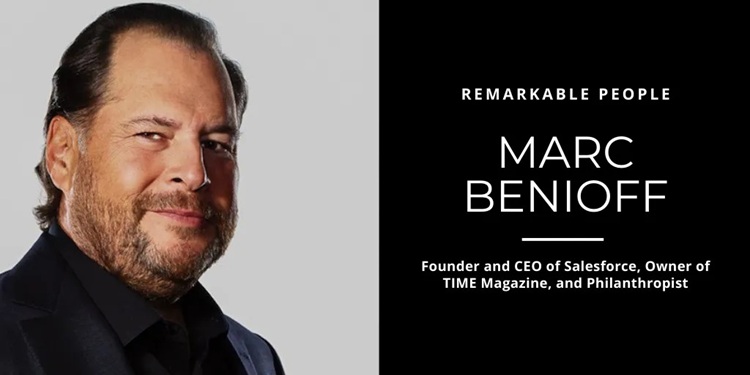
Image credit : Guykawasaki.com
Marc Benioff’s hands-on approach to sales, his persistence in overcoming challenges, and his growth mindset pushed the boundaries of not only his company but the tech industry as a whole. Under Benioff’s leadership, Salesforce introduced the concept of subscription-based pricing for enterprise software, which departed from the traditional perpetual license model. This approach made enterprise-level CRM accessible to companies of all sizes, democratizing access to powerful business tools.
Benioff is not an exception. Larry Ellison, co-founder and former CEO of Oracle Corporation, was renowned for his aggressive sales tactics and direct involvement in major sales negotiations. In Oracle’s early years, Ellison took on the role of chief salesman, leveraging his industry connections and technical expertise to win over large corporate clients for Oracle’s database solutions.
Benioff and Larry are exemplary examples of the first salespersons of their company.
Without the First Salesperson, a company suffers the following consequences:.
- Brand Perception: A lack of sales focus can harm the company’s reputation and brand perception, making it harder to attract and retain customers.
- Weak Relationships: Strong customer relationships are crucial in B2B sales. If the CEO is not involved in or supportive of sales efforts, the company may fail to build and maintain strong customer relationships.
- Low Motivation: Sales teams often look to the CEO for inspiration and leadership. If the CEO doesn’t prioritize sales, it can lead to low morale and motivation among sales personnel.
- Competitive Disadvantage: Competitors with strong sales leadership will likely outperform a company with weak sales accountability, resulting in a loss of market share.
Ideal First Salesperson of a Company – What will he do?
Here are some things that the First Salesperson of a Company will do:
- Take ownership and accountability for sales and marketing rather than delegating it to the BD head.
- Active client engagement, such as regular and voluntary interactions with key stakeholders, rapport building and strategic conversations, visits, etc.
- Excellent and grass-roots-level understanding of the strengths and weaknesses of the products and services of your organization vis-à-vis competition
- Knowledge of market dynamics and nuisances
- Active participation in sales processes such as marketing campaigns, lead generation, client presentations, negotiations, and onboarding
- Good personal rapport with sales and marketing team members
As a simple rule, if the CEO of a B2B company spends more than 50% of his time on the above activities, there is nothing stopping their growth. But the unfortunate reality is that they spend time reviewing decks after decks, interviewing candidates for non-strategic positions, troubleshooting issues, and having hours of board room discussions about various strategies.
Here’s what we do with Sales Transformation for B2B companies
#nilakantasrinivasan-j #canopus-business-management-group #B2B-client-centric-growth #Marc-Benioff #Salesforce
And how it benefits B2B organizations in achieving client centric growth
If I tell you that one thing you focus on can give you a 13% increase in profit margins, not only that, it can also lift customer loyalty by 8%, and what’s more, your products can grow two times faster; would you be interested in it?
A resounding yes, right!
What is it? It’s Sustainability.
The points above illustrate that sustainability is not just a moral imperative but also a strategic advantage for B2B organizations focused on client-centric growth.
For example, Microsoft, being a large B2B enterprise, has committed to and benefited from sustainability. Nike is another large consumer brand that has gone gung-ho on sustainability.
They have laid out 10 Principles for Circular Designs for creating sustainable products that I think many of us can imitate for the good of the world and for business benefits too. I’m really impressed by the simplistic appeal of the principles.

Nike’s 10 Principles of Circular Designs
Let’s see, what are they?
- Material Choices: Selecting low-impact materials that use pre- and post-consumer recycled content. As a result, Nike has increased the use of recycled materials, such as in their Flyknit products, that are made from yarn made from recycled plastic bottles.
- Cyclability: Designing products that can be easily recycled at the end of their life. For example, Nike’s Space Hippie shoes are made from recycled materials and are designed to be disassembled and recycled again.
- Waste Avoidance: Minimizing waste during the production process. For example, Nike’s Move to Zero initiative has significantly reduced manufacturing waste, with many facilities achieving zero waste to landfill status. Their Flyleather is made from at least 50% recycled natural leather fiber, reducing waste from leather manufacturing.
- Disassembly: Creating products that can be easily taken apart for recycling or repair. Nike’s ISPA (Improvise, Scavenge, Protect, Adapt) line features shoes that can be disassembled to replace worn-out parts.
- Refurbishment: Designing products that can be refurbished and given a second life. Nike’s Refurbished program takes gently worn shoes, cleans them, and resells them at a lower price.
- Green Chemistry: Using safer chemicals in the production process. Nike’s commitment to green chemistry includes eliminating hazardous chemicals from their supply chain, thereby improving safety for workers and reducing environmental impact.
- Durability: Creating long-lasting products to reduce the need for frequent replacements. Nike’s Air Max shoes are known for their durability and long lifespan.
- Versatility: Designing products that can be used in multiple ways or for different purposes. Nike’s Tech Pack collection features versatile clothing that can be worn in various settings.
- Packaging: Reducing the environmental impact of packaging. Nike’s Move to Zero initiative includes using recycled materials for shoe boxes and reducing packaging waste.
- New Models: Innovating new business models that promote sustainability. Nike’s subscription service for kids’ shoes, Nike Adventure Club, allows parents to return outgrown shoes for recycling.
Role of Design Thinking in creating the 10 Principles
Interestingly, Design Thinking played a crucial role in creating Nike’s 10 Principles of Circular Design by fostering a user-centered, innovative, and iterative approach. Here’s how Nike used Design Thinking:
- Empathy: Understanding the needs and challenges of both consumers and the environment. Nike engaged with athletes, designers, and sustainability experts to identify key issues and opportunities.
- Define: Clearly articulating the problem of environmental impact and waste in the fashion industry. This step helped Nike focus on creating solutions that address these specific challenges.
- Ideate: Generating a wide range of ideas for sustainable design. Nike collaborated with institutions like Central Saint Martins to brainstorm and develop innovative concepts.
- Prototype: Creating tangible prototypes to test and refine ideas. For example, Nike’s Flyknit and Space Hippie shoes were developed through multiple iterations to ensure they met sustainability goals.
- Test: Evaluating prototypes with real users and gathering feedback. Nike tested their products with athletes and consumers to ensure they were both functional and sustainable.
- Iterate: Continuously improving designs based on feedback and new insights. Nike’s commitment to sustainability involves regularly revisiting and refining their principles and products.
I feel only because Nike applied Design Thinking they were able to create a comprehensive set of principles that guide their efforts towards circularity and sustainability. Design thinking framework is really an underutilized framework for many B2B organizations that has a lot of potential for driving business growth.
Here’s what we do with Design Thinking for B2B companies
#nilakantasrinivasan-j #canopus-business-management-group #B2B-client-centric-growth #Nike #Nike-circular-designs #design-thinking
Client Centric Strategies for Success: Lessons from Bisk Farm’s Growth
Many of our stories are about large brands or B2B organizations and their growth strategies.
This time, we have curated this piece about an Indian business growth story that faced challenges initially but overcame them successfully. If you are from the eastern part of India, it is very likely that you have seen confectionery from the brand Bisk Farm.

Bisk Farm is the flagship brand of SAJ Food Products, a FMCG company headquartered in Kolkata. It was established in 2000 by Krishnadas Paul, when he was 60. However, he was not a newbie to FMCG, as he had been a distributor for Nestle, Dabur, and Reckitt & Colman for over 30 years.
In 2000, SAJ pioneered the introduction of sugar-free biscuits in India. Long before health-conscious options became popular in the biscuit industry, SAJ Food Products set a precedent. Their sugar-free biscuits paved the way for healthier snacking, inspiring even industry giants like Britannia to follow suit in subsequent years. But it was not a cake walk!
It was a bold path for new market entrants. Growing a new product in a new market is always an uphill climb. That was the first speed breaker for SAJ Foods for the following reasons:
- Creating sugar-free biscuits that taste as delightful as their sugary counterparts isn’t easy. The challenge lay in ensuring that the biscuits remained crispy, crumbly, and satisfying, even without the usual sugar rush.
- Alternative sweeteners used in sugar-free products often come at a higher cost than regular sugar. Balancing affordability with quality was a bottleneck.
- Sugar-free products must adhere to stringent regulations regarding labeling, claims, and permissible ingredients.
- Convincing consumers to embrace sugar-free options required a hard marketing push. Many associate “sugar-free” with blandness or sacrifice.
- The biscuit market is fiercely competitive, with established players like Britannia, ITC, and Parle
SAJ Food Products had to reframe the narrative, emphasizing health benefits and appealing to health-conscious consumers. They had to carve a niche for themselves with a sugar-free range as a unique proposition.
Despite their best efforts, SAJ failed with their sugar-free products due to the following reasons:
- Distribution Network: You would know that in the FMCG, the presence of a deep and active distribution network is vital. But Bisk Farm’s network had new and inexperienced distributors. This led to poor channel penetration and intermittent supply issues. As a result, the biscuits struggled to reach a wider audience.
- Overcoming Skepticism: Consumers didn’t associate sugar-free biscuits with a delightful taste. A broader marketing campaign and deeper pockets were needed for this.
- Britannia’s Dominance: Taking on Britannia, a formidable player in the Indian biscuit market, was no small feat. Britannia’s established presence posed a significant challenge.
After 4 years of hardship, in 2004, Bisk Farm encountered losses amounting to Rs 15 crore. For a start-up, this was a big number. Krishnadas and his children made one last attempt to review the company, and here are the strategic actions they took to rise from the ashes:
- Regional Focus: They recognized the importance of regional appeal. So instead of targeting pan-India distribution, they chose to go regional. In doing so, they focused on Eastern India and introduced products tailored to local tastes. This shift in approach, coupled with targeted marketing efforts, proved pivotal in revitalizing sales and establishing a strong foothold in the region.
- Differentiation and Diversification: With the growing presence of competitors like Britannia, SAJ Food Products understood the need for diversification beyond biscuits. Bisk Farm deliberately carved a niche in the premium segment. This led to the launch of Just Baked outlets, offering a range of bakery products and snacks. By expanding its product portfolio and regional retail presence, the company not only mitigated competitive pressures but also tapped into new revenue streams, contributing to its overall growth.
Free Download
Get your copy of E-Book “The Hearts & Minds Client Centric Strategy” on how to achieve sustainable business growth . It contains cases, examples, detailed implementation approach along with ideas to achieve sustainable growth, especially for B2B firms. (Pages : 51)
Merely by pursuing these 2 strategies, they were able to turn around and come out of their financial situation.
Below are the two important takeaways for any organization, B2B or B2C, that wants to achieve consistent growth and tap its full potential.
Market to Product/Service Fit
It is very important to create a good fit between your products/services and target customer segments. For this to happen, you will need to understand the customer pain and the unique value proposition that your products/services offer. In order to achieve a good fit, you may need to take tough business calls, such as narrowing the product range, features, and geography. At first, it might look very narrow and wouldn’t resonate with your larger vision. For Bisk Farm, selling just in the eastern region was a tough call, but it helped achieve their larger vision of becoming a complete food company in the long run.
Customer Insights
Due to the complex market dynamics in today’s VUCA world, it is very important for you to constantly gain customer/client insights and continuously fine-tune your product/service to market fit. Just doing C-Sat surveys and publishing scores wouldn’t help. Throughout its journey, SAJ Food Products has demonstrated a keen understanding of customer preferences and market dynamics. By leveraging insights into regional tastes and preferences, the company tailored its product offerings and marketing strategies to resonate with local consumers. So this can lay the foundation for sustained growth and market leadership.
Subsequently, SAJ Food Products pursued an aggressive expansion strategy. By investing in new production facilities in strategic locations like Siliguri and Bangalore, the company increased its manufacturing capacity and strengthened its distribution network. This facilitated its expansion into previously untapped regions. They kept the prices constant at Rs 10 and expanded to small pockets in Tamil Nadu and Andhra Pradesh with 1700 distributors, later expanding into 19 states as a pan-India brand. By 2023, Bisk Farm clocked a revenue of Rs.2,100 Cr and became the 4th largest player in India with a 4% market share.
#nilakantasrinivasan-j #canopus-business-management-group #B2B-client-centric-growth #Bisk-Farm #SAJ-Food-Products

In a client-centric business growth strategy, effective meetings are indispensable. They ensure that client needs, expectations, and feedback are clearly communicated and understood. By structuring meetings to be concise, goal-oriented, and inclusive, businesses can foster stronger client relationships and trust. Effective meetings not only align internal teams with client objectives but also enable proactive problem-solving and innovation. Regular, transparent communication through well-executed meetings demonstrates commitment to client satisfaction and helps in building long-term partnerships. Ultimately, the effectiveness of these meetings is reflected in the overall growth and success of the client-centric business.
#nilakantasrinivasan-j #canopus-business-management-group #B2B-client-centric-growth

Integrity plays a crucial role in client-centric business growth. When a business operates with honesty and strong moral principles, it builds a foundation of trust with its clients. Clients who trust a business are more likely to remain loyal, provide repeat business, and refer others, driving sustainable growth. Integrity ensures that the business consistently delivers on its promises, maintains transparency, and treats clients with respect. This not only enhances the company’s reputation but also creates a positive and ethical work environment, ultimately leading to long-term success and profitability.
#nilakantasrinivasan-j #canopus-business-management-group #B2B-client-centric-growth

A winning mindset in business growth revolves around prioritizing the needs and satisfaction of clients. This mindset encourages continuous improvement, adaptability, and a proactive approach to solving client challenges. With this mindset, embrace challenges and find ways to address them proactively. Ultimately, a winning mindset aligns your business success with the client success, driving mutual growth and long-term partnerships.
#nilakantasrinivasan-j #canopus-business-management-group #B2B-client-centric-growth
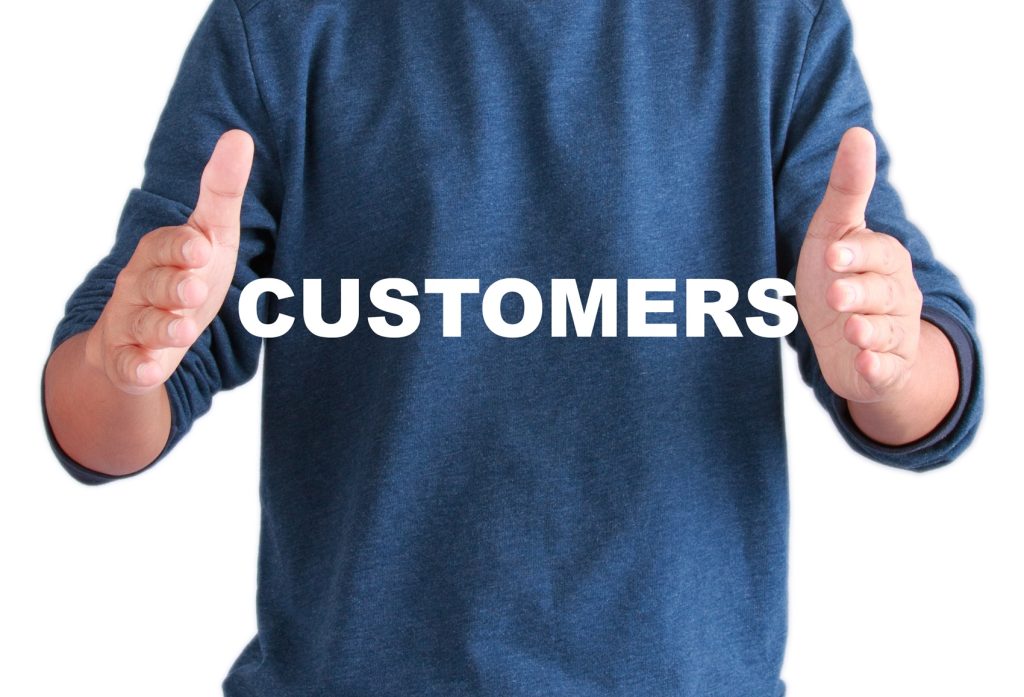
In client centric business growth, setting boundaries plays a pivotal role. Boundaries define the scope of services, expectations, and communication, ensuring clarity and trust between a business and its clients. They help manage workloads, prevent burnout, and maintain high-quality service. By clearly outlining what can and cannot be done, businesses can focus on their core competencies, leading to more efficient operations and satisfied clients. Effective boundaries also foster a professional environment where respect and mutual understanding are paramount, ultimately driving sustainable growth.
#nilakantasrinivasan-j #canopus-business-management-group #B2B-client-centric-growth
Sign-up for collaborat newsletter



